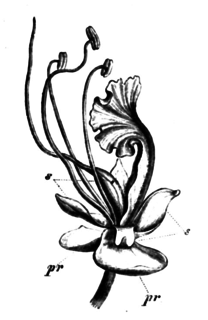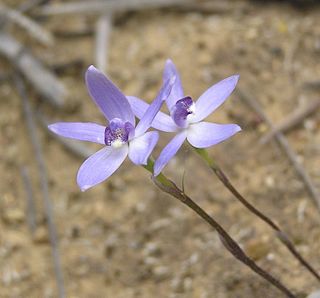
The black-throated mango is a hummingbird species native to South America and Trinidad and Tobago.

Macrolobium is a legume genus in the subfamily Detarioideae. It is a tropical genus with about 80 species. Half occur in Brazil, where they are common in the floodplains of the Amazonian Basin. Members of the genus are used as ornamentals and for their wood.
Macrolobium pittieri is a species of plant in the family Fabaceae. It is found in Colombia and Panama. It is threatened by habitat loss.
Macrolobium stenopetalum is a species of plant in the family Fabaceae. It is found in Suriname.
Macrolobium taylorii is a species of plant in the family Fabaceae. It is found only in Peru.
Beauprea congesta is a species of plant in the family Proteaceae. It is endemic to New Caledonia.
Beauprea crassifolia is a species of plant in the family Proteaceae. It is endemic to New Caledonia.

Helicia is a genus of 110 species of trees and shrubs, constituting part of the plant family Proteaceae. They grow naturally in rainforests throughout tropical South and Southeast Asia, including India, Sri Lanka, Indochina, Peninsular Malaysia to New Guinea and as far south as New South Wales.
Helicia albiflora is a species of plant in the family Proteaceae. It is endemic to Papua New Guinea. It is threatened by habitat loss.
Helicia amplifolia is a species of plant in the family Proteaceae. It is endemic to Papua New Guinea. It is threatened by habitat loss.
Helicia calocoma is a species of plant in the family Proteaceae. It is endemic to Papua New Guinea. It is threatened by habitat loss.
Helicia insularis is a species of plant in the family Proteaceae. It is endemic to Papua New Guinea. It is threatened by habitat loss.
Helicia peltata is a species of plant in the family Proteaceae. It is endemic to Papua New Guinea. It is threatened by habitat loss.
Helicia retusa is a species of plant in the family Proteaceae. It is endemic to Papua New Guinea.
Helicia rostrata is a species of plant in the family Proteaceae. It is endemic to Papua New Guinea.
Roupala loxensis is a species of plant in the family Proteaceae. It is endemic to Ecuador.
Roupala sphenophyllum is a species of plant in the family Proteaceae. It is endemic to Peru.
Stenocarpus dumbeensis was a species of plant in the family Proteaceae. It was endemic to New Caledonia.
Grevillea phanerophlebia, commonly known as the prominent vein grevillea and the vein leaf grevillea, is a shrub of the genus Grevillea native to a small area on the west coast in the Mid West region of Western Australia.

Caladenia amplexans, commonly known as the dainty blue china orchid, is a plant in the orchid family Orchidaceae and is endemic to Western Australia. It has a relatively broad leaf and one or two pale blue and white flowers. It is distinguished from the other two similar blue orchids by the sides of the labellum which curve over the column and almost touch. This species also has a more inland distribution than C. aperta and C. sericea.




